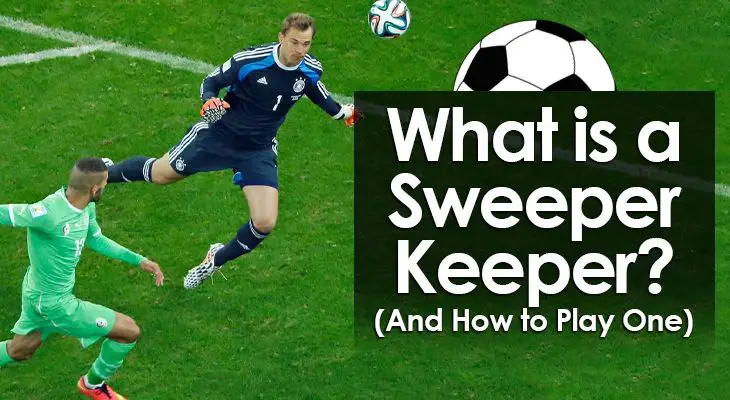What is a Sweeper Keeper? (And How to Play One)
Rui Patricio, former goalkeeper of the English Premier League club Wolverhampton Wanderers, wore the number 11 while playing for the club.
If you need any evidence to stress how unconventional modern-day goalkeeping is, then that shirt number is one for the books.
One other modern "unconventional" goalkeeping practice is the use of sweeper-keepers.
But what is the sweeper-keeper, and what are the qualities of a good one?
Let's discuss:
What Is A Sweeper-Keeper?
Every team relies on the goalkeeper for one major job -- keep the ball out of the net.
More often than not, the keeper’s duties will revolve around the penalty area, with occasional forays forward to close the gap on an attacker or narrow the angle available for shooting.
The job of a sweeper-keeper stretches further...
In addition to the traditional duties of keeping the ball out of the net and making saves, a sweeper-keeper is expected to (1) be involved in the build-up play of the team and is also expected to (2) be comfortable coming outside the area to receive or win the ball back.
They are used almost as an extra defender in both defensive and attacking phases of play.
(an eleventh outfield player, if you will)
While the role is more rampant in modern-day soccer, it's by no means completely strange to older iterations of the game.
In fact, the very first “sweeper-keeper” can be traced all the way back to the 1800s.
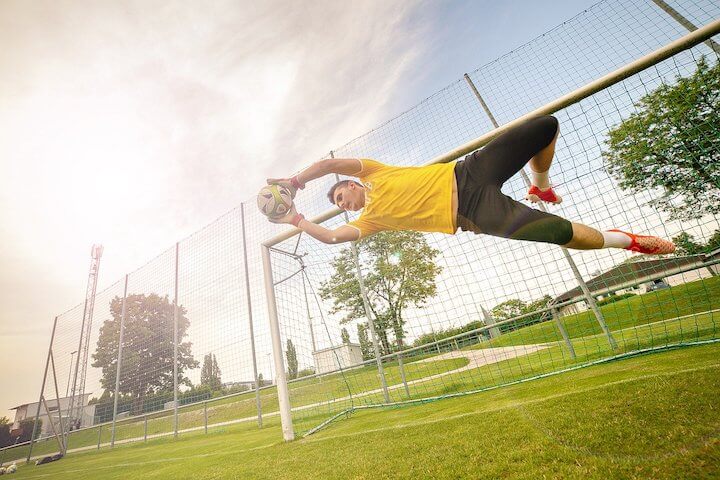
The First Sweeper-Keeper
Over time, many rules in soccer have been removed, added, or modified as the game evolves.
One of such rules gave goalkeepers a lot more freedom on the ball than they have today.
Back in the 1800s, Rule 8 of the FA’s handbook stated:
“The goalkeeper is allowed to handle the ball inside his own half, provided he does not carry it.”
One goalkeeper that took full advantage of this back then was the English shot-stopper, Leigh Richmond Roose.
Over the course of a career that included spells at Everton, Stoke City, and Sunderland, Roose developed a reputation for bouncing the ball all the way to the halfway line before launching it for teammates to attack.
This was the first known “sweeper-keeper” behavior seen in soccer, and he continued to exploit the rule until he retired.
Rule 8 changed shortly after that, restricting goalkeepers to their penalty area.
And Then Came The Rest...
More sweeper-keepers popped up after Roose’s time, and they garnered even more popularity for it.
In fact, Lev Yashin and Gyula Grosics are commonly (albeit incorrectly) referred to as the first set of sweeper-keepers in the game, and they were both outstanding at it.
Grosics was an outstanding goalkeeper, despite his height. He stood at only 5”8 tall, which is short for a player in that position, but he was still talented enough to be a regular in the famous Hungarian national team of the 50s.
That team relied on every player on the team to contribute to attacking moves, and many of these attacks started with Grosics’ distribution.
Lev Yashin was also well-known for his incredible reflexes and overall goalkeeping ability.
However, in his role as sweeper-keeper, what stood out the most was the efficiency by which he launched counterattacks with long throws from his area out to teammates in attacking positions.
Over the years, the role continued to evolve...
Now, it’s not so much of a big deal when a goalkeeper comes all the way out of their area to exchange passes with outfield teammates (we’re looking at you, Ederson!)
Many clubs now rely heavily on sweeper-keepers, especially in cases where the team plays a high defensive line that can leave the goalkeeper exposed.
Big clubs nowadays deploy world-class sweeper-keepers who fill this role excellently:
- Ederson (Manchester City)
- Manuel Neuer (Bayern Munich)
- Alisson Becker (Liverpool)
- Hugo Lloris (Tottenham)
- Marc Andre Ter Stegen (Barcelona)
There’s a good reason for the growing popularity of the role too - especially among the big clubs.
Apart from generally being more exciting, sweeper-keepers bring tactical benefits to the team in both phases of play.
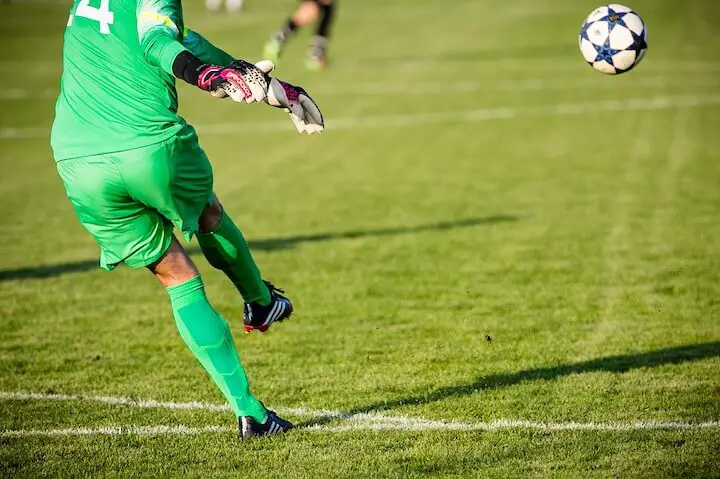
Using a Sweeper-Keeper in Defense
When out of possession, many teams like to defend from the front, which means they get their attackers to press the opposition in every third of the pitch until possession is won.
For this approach on defense to be effective, these teams often have their defenders playing a high line, so they can put pressure on the opponent and be as close as possible to areas where possession can be won.
The downside of the approach is the huge gap left between the defense line and the goalkeeper due to the high line.
The solution?
Use a sweeper-keeper.
A sweeper-keeper in this scenario will be tasked with controlling the space behind the defense, reducing the possibility of attackers springing the high line and going through on goal.
The keeper can cover ground more quickly and sweep up any through balls, loose balls, or balls played over the top of the defense line.
There might even be opportunities to start a counter-attack straight away from that move!
Using a Sweeper-Keeper in Attack
One of the greatest soccer managers in history, Pep Guardiola, is known for his teams of technically and tactically astute players.
Those teams are also known for their “total control” approach to playing the game, which is the closest thing to the “total football” of Johan Cruyff’s time.
It's no surprise, then, that Pep likes to have his goalkeepers playing the ball out from the back.
Under his management, Valdes, Neuer, and Moraes have shone in that role.
Manuel Neuer specifically grew his reputation to become one of the greatest goalkeepers of all time while playing the role of sweeper-keeper.
The argument for sweeper-keeper benefitting the attacking phases is simple...
In a regular game situation with a traditional goalkeeper, build-up play from the back involves only the defenders.
Teams recognize this fact and often encourage their attackers to press the defenders and try to force them into making errors because possession won in that zone leaves them with a shorter path to goal and a higher chance of scoring.
This is made easier by the fact that the attackers will often overload the defenders trying to build up play, and this is where the sweeper-keeper steps in.
With the involvement of the keeper in build-up play, the defenders have a better chance of beating the press and progressing the ball further up the pitch to build an attack for the team.
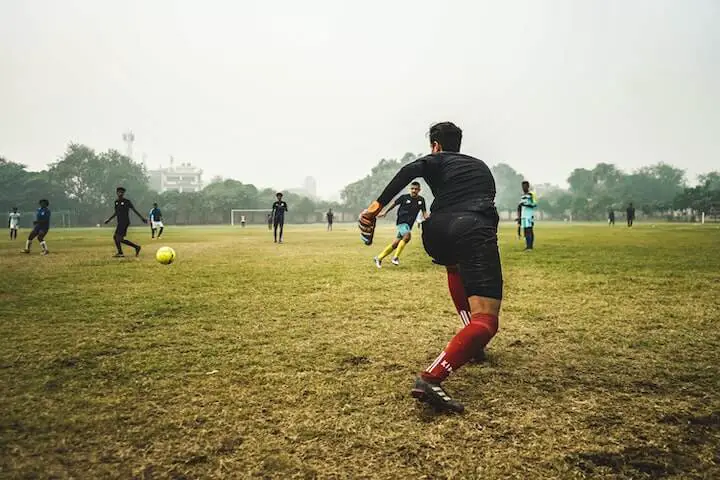
Key Attributes Of A Good Sweeper-Keeper
Every good sweeper-keeper must show the following attributes at a high level:
1. Positioning
Being in the right place at the right time.
This involves sweeping up loose balls behind the defense or making themselves available to receive a pass from a teammate.
2. Composure
A sweeper-keeper will typically face more pressure in game situations than a regular keeper will.
They will face situations where one moment of uncertainty or fear is enough for the opponent to capitalize and score. Sweeper-keepers must have the ability to remain calm at all times.
3. Distribution
Good distribution is key.
This applies to short passing in the build-up play from back to front. It also involves long passing to find teammates in space when trying to start a counter-attack through direct play.
This applies whether the keeper is kicking the ball or throwing it.
4. Awareness / Concentration
They must be sharp and ready for anything at any time.
Goalkeepers can sometimes lose concentration especially in games where there’s not much to do.
A sweeper-keeper cannot afford to lose concentration as the ball can come to you from any angle at any time -- from the opponent or even your own teammate.
5. Speed
This applies to physical speed and speed of thought.
For the former, sweeper-keeps need to be quick off their line for situations to sweep up a loose ball or close the angle on an onrushing attacker.
For the latter, their decision-making needs to be excellent.
Sweeper-keepers need to be able to think quickly on your feet.
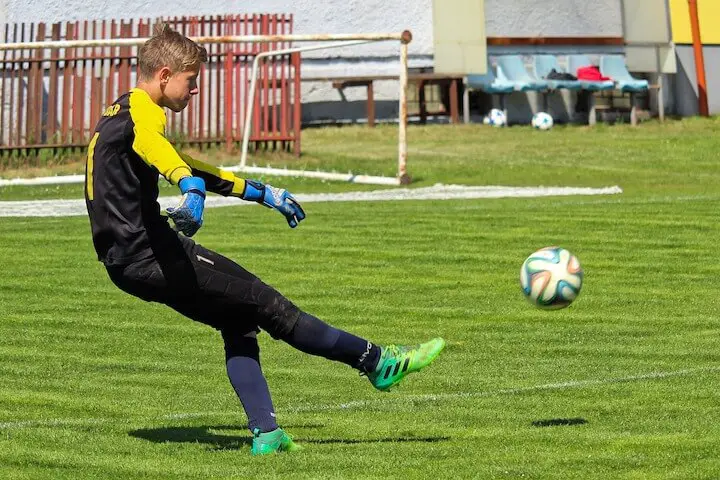
Conclusion
Using a sweeper-keeper is a high-risk tactic, which is why you’re more likely to see the big teams do it.
Its success depends heavily on the personnel available to the manager, and its relevance to the rest of the tactical setup of the team.
When done properly, it can also be a high-reward approach, especially for teams that like to have total control of the ball or teams that like to hit the opponent on the counter often.
However, the most important thing is finding the right balance for the team, and the charge falls on the manager to make that happen.
Further Reading: 11 Soccer Positions Explained (Roles and Responsibilities)

